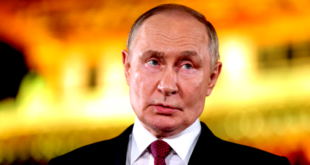 Dr. Utkarsh Sinha
Dr. Utkarsh Sinha
Pakistan today finds itself ensnared in a complex web of crises, with its borders under threat from all directions. To the east, long-standing border disputes and tensions with India persist; to the west, war-like conditions with Afghanistan have escalated; internally, the growing insurgency in Balochistan continues to fester; and now, the increasing interference of U.S. President Donald Trump in South Asia has pushed Islamabad into a deeper quagmire. The violent clashes along the Afghanistan-Pakistan border in early October 2025, which resulted in dozens of deaths and paralyzed cross-border trade, have further aggravated the situation. Trump’s second term has introduced a new dynamic to South Asia, offering Pakistan apparent support while simultaneously fueling regional instability. Can Pakistan extricate itself from these crises, or will Trump’s interventions give rise to new problems? This editorial analyzes these challenges, reviews Pakistan’s policies, and sheds light on potential outcomes.
Border Tensions with India: A Never-Ending Saga
The relationship between India and Pakistan has always been fraught, but in 2025, tensions have reached a new peak. In April 2025, a terrorist attack in Kashmir killed 25 Indian citizens and one Nepali, prompting India to launch military action. On May 7, 2025, India conducted missile strikes inside Pakistan, sparking a brief but deadly conflict dubbed “Operation Sindoor.” The Pakistani military retaliated with border skirmishes, drone attacks, and minor clashes. Trump claimed credit for de-escalating the conflict, threatening tariffs to bring both nations to the negotiating table. However, Indian Prime Minister Narendra Modi dismissed Trump’s intervention, asserting that the ceasefire was a result of bilateral efforts.
This tension is not merely military; it is intertwined with the Kashmir dispute, water-sharing issues, and the nuclear arms race. Pakistan’s military, which has long viewed India as its primary adversary, allocates most of its resources to the eastern border. However, the escalating conflict with Afghanistan on the western front has placed Pakistan in a dual bind. If these tensions persist, Pakistan’s economy—already burdened by inflation and debt—could deteriorate further. International pressure, particularly from the U.S. and China, may force Pakistan to abandon its “proxy war” strategy and focus on diplomacy. For now, however, this tension remains a persistent headache for Pakistan, inflating its military budget.
Afghanistan Front: On the Brink of War
Pakistan’s western frontier, the Durand Line with Afghanistan, has become its most volatile region. The conflict that erupted in October 2025 has brought both countries to the edge of war. On October 9, Pakistan conducted airstrikes in Kabul, Khost, Jalalabad, and Paktika, targeting Tehrik-i-Taliban Pakistan (TTP) hideouts. In retaliation, the Taliban attacked Pakistani border posts, with Pakistan reporting 23 soldiers killed, while the Taliban claimed 58 Pakistani casualties. Pakistan, in turn, claimed to have killed 200 Afghan fighters. Key border crossings like Chaman and Torkham were shut, halting trade and stranding thousands of trucks.
This conflict is not just about border disputes; it is rooted in the presence of terrorist groups like the TTP, the deportation of Afghan refugees, and the historical Durand Line dispute. Pakistan accuses the Taliban of sheltering the TTP, which carries out attacks inside Pakistan, while the Taliban accuses Pakistan of violating its sovereignty. Russia has urged both nations to exercise restraint, while the U.S. and other powers are concerned about regional instability. This front is particularly dangerous for Pakistan, as its military is already stretched thin by tensions with India. A prolonged conflict could devastate Pakistan’s economy, given that trade with Afghanistan is worth billions annually. Moreover, the TTP’s increasing activities have destabilized Pakistan’s northwest, with a 27% rise in terrorist attacks recorded in September 2025. Pakistan must reconsider its “strategic depth” policy, which once supported the Taliban but now backfires. If mediation efforts (e.g., by Qatar or Saudi Arabia) fail, a full-scale war could economically cripple Pakistan.
Balochistan Insurgency: A Wound That Won’t Heal
Among Pakistan’s internal crises, Balochistan remains the oldest and most intractable. The insurgency, dating back to the 1940s, has intensified in 2025. The Baloch Liberation Army (BLA) marked a turning point by hijacking a train in March 2025. In April 2025, the United Nations called on Pakistan to address human rights violations in Balochistan, including enforced disappearances and repression. The U.S. designated the BLA as a foreign terrorist organization in August 2025, offering Pakistan some relief but no solution.
Balochistan’s issues are political, economic, and cultural. The central government exploits the province’s natural resources (gas, minerals) while locals see little benefit. The $60 billion China-Pakistan Economic Corridor (CPEC) passes through Balochistan but faces attacks from insurgents. The insurgency has evolved into a guerrilla war, with both military operations and civilian protests. Pakistan’s reliance on repressive measures only exacerbates the problem. This insurgency weakens Pakistan internally, as resources are already stretched by external fronts. If separatism in Balochistan intensifies, a significant part of Pakistan could become unstable, threatening its very existence.
Trump’s Growing Interference in South Asia: Breeding New Problems
Trump’s second term has introduced a new layer of complexity to Pakistan’s challenges. Since taking office in January 2025, Trump has approached South Asia through a lens of “transactional realpolitik,” prioritizing U.S. interests. He claimed credit for de-escalating the May 2025 India-Pakistan conflict, hosting Pakistani Army Chief Asim Munir for lunch at the White House, strengthening the U.S.-Pakistan Economic Partnership, and greenlighting a Saudi Arabia-Pakistan defense agreement. Simultaneously, Trump imposed tariffs on India, disrupted the H1B visa regime, and sanctioned India over its ties with Russia.
While this interference seems momentarily beneficial for Pakistan, it is spawning new problems. First, it disrupts regional balance—by supporting Pakistan, Trump risks alienating India, which could escalate India-China tensions, as China already encircles India through Pakistan, Bangladesh, and Afghanistan. Second, nuclear fears: Trump’s officials intervened in May 2025 over fears of nuclear escalation, but increased Pakistani reliance on the U.S. could erode its independent foreign policy. Third, economic pressure: Trump’s “America First” policy may offer Pakistan trade deals, but using Pakistan as a proxy could exacerbate instability in Afghanistan and Balochistan. Finally, Trump’s interference could revive contentious issues like Kashmir mediation, which might provide Pakistan domestic political gains but risks international isolation. This makes Pakistan vulnerable to being a pawn in the U.S.-China great power game, with Trump potentially using it against India.
Analysis of Multifaceted Crises: What Lies Ahead for Pakistan?
These fronts have trapped Pakistan in a web from which escape seems daunting. Militarily, its 600,000-strong army is stretched thin by multiple challenges. Economically, Pakistan relies on IMF bailouts, and border closures are crippling trade. Politically, the government’s legitimacy is in crisis, with rising terrorism and governance failures eroding public trust. Trump’s interference adds further complexity, potentially turning Pakistan into a U.S. proxy. If Pakistan does not recalibrate its policies—ending support for proxy groups, seeking political solutions in Balochistan, engaging in dialogue with India and Afghanistan, and maintaining distance from Trump’s interventions—instability could spiral. A full-scale war could isolate Pakistan, as both China and the U.S. prefer regional stability. On the positive side, international mediation (e.g., Trump’s initiatives) could yield results.
Pakistan must shift its priorities: focus on internal development, democratic reforms, and peace with neighbors. Otherwise, these multifaceted crises and Trump’s interference could push it toward becoming a failed state. The future is uncertain, but the choice rests with Pakistan.
(Author is a senior journalist)
 Jubilee Post News & Views
Jubilee Post News & Views





